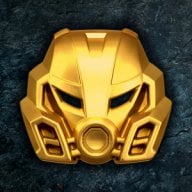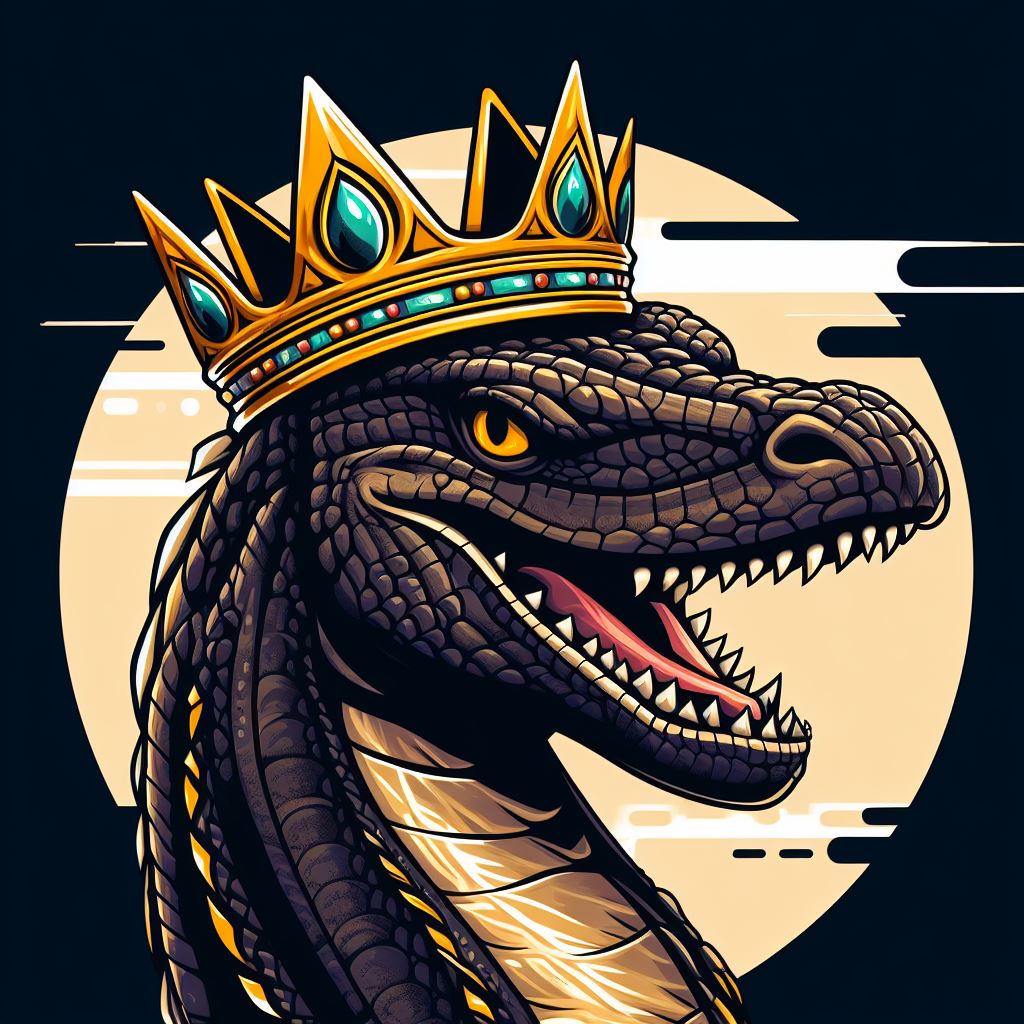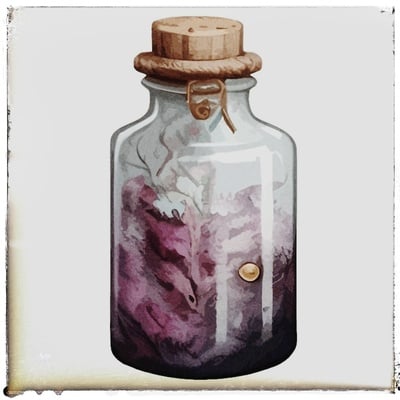So you’re telling me I get free accommodation, free food, and it’s protected by a T-rex?
Landlords hate this simple trick!
No wifi
Now that’s a deal breaker
Game configuration option: swap knife for wifi.
Pet T-Rex hack.
Free rent hack.
Free food jack.
Personal football stadium hack.
Indestructible Safe house hack.
And when you’re bored of that life, wait for the t-Rex to go extinct. They’re very well known for it.
I just sit in the hut and enjoy my food while the dinosaur is starving outside.
Sounds okay to me.
Humana last weeks without food, you think you’re going to starvea 7 ton, cold blooded carrion eater to death in a mere month?
7 ton seems pretty big and I think they were warm-blooded, I recon they’ll start starving before I run out of food. They may not be dead by day 30 but on those final nights of starving unconciousness you could probably stick it with the knife. Large birds of prey may only eat once per day but they still starve within a couple of days, and the bigger they are, the hungrier they get.
Good point wait out the first 3 weeks then when it’s exhausted launch sneak attacks everything it closes it’s eyes. Plus if the T rex has no food safe to assume it has no water
Alligators and crocodiles can go months without eating. If needed, apparently, even 2 years. I wouldn’t count on a dinosaur being weak with hunger in a few weeks.
I mean the brief is of you kill it you get a big payout but you otherwise get to live rent free in a hut for month fully catered. As consolation prizes go there are worse gambles and this one at least means you do not die.
Will the T-Rex be provided food? Because I could just wait it out. But if it’s provided food I’d just make sure it swallows the hunting knife with its meal and in theory it should cause some gastrointestinal leakage…
It probably sucks down sharp bones no problem. But then, nobody really has any idea. It could play the ukulele for all we know.
If it can play the ukulele, it’s already won.
After 15 minutes of hearing its tiny arms try to play a song I’d ask to be eaten.
You think Vogons might be descendants of dinosaurs? I heard their poetry is to die for.
Not with those arms
Definitely with those arms
Use the knife to threaten the guy who’s job it is to feed it.
I get a roof over my head and food… For free!?
The T-rex will probably die eventually from starvation… Which means I could lose my roof and free food. Biggest challenge will be trying to keep the T-rex alive…
It’s very telling that some people have had worse roommates than a T. Rex lol
T-Rex ain’t gonna blast my wall with the light of a thousand suns playing video games on a 50 inch screen at 4 am when I gotta wake up in four hours
Or just wait for the T. rex to be on its deathbed, then kill it.
Alternative option: No one said how much or what type of food, and T-Rex are thought to have been scavengers. Spend a month splitting your meal. Tame it. Make friends with it. Teach it to love. Then kill it.
Wwhhhhyyyy!?
Gasp, you cold blooded monster
Rub the blade into fecal matter, wait till she nods off and then stab deeply before quickly returning to the hut. Repeat a few times.
Now just wait for the sepsis to kick in and collect the prize.
Additionally, poop in it’s food (if it has any). E. Coli poisoning may help.
That’s a human weakness, most animals eat poop for breakfast
Some humans, too!
Like golf legend Shooter McGavin!
I love the thought that instead of pooping in the indestructible hut, then going out in sorties, throwing poop on its food, you decide to straight up pop a squat over the only food source while locked in an area with a t rex. You are a very bold person, your bravery has my respect, if not your intelligence
Do you think you are going to have a very pleasant shit with a goddamn Trex running at you? Actually now that I think about it you would probably shit your pants in that situation.
Whose fecal matter? I need your response ASAP
If the hut is indestructible I’ll just wait for it to starve lol
Won’t it starve in a month?
Good question. Many modern day reptiles can go a long time without food. But a t rex is many orders of magnitude bigger than anything we have now. I did do a zoology major at uni, but my physiology knowledge sucks (unsurprising given I barely passed it).
Theropods were warm blooded, like birds. They would not be able to endure without eating for weeks and months at a time like modern cold blooded reptiles.
You’re conflating how warm bloodedness works in mammals with how it would work in theropods. They were warm blooded because they could not shed heat from metabolic processes due to their volume to surface area ratio, not because their bodies needed it. We still do not understand how it actually worked. This is evidenced by us still not knowing the reason why stegosaurus had plates, Spinosaurus had their sail etc.
Also, some birds can go weeks without food during migration or injury. Further to this, theropods are many magnitudes of size larger than birds. They would have far greater fat stores than modern birds.
Disclaimer, this is based on my 16yr old zoology major, and we are in a dinosaur discovery golden age so something may have changed.
We know juvenile T-Rex grew alarmingly fast, so high metabolism is in their wheelhouse. They were also rather optimized for running, so that warm blood may have been used for high-energy travel, like Tuna.
That being said, they might be able to modify their metabolism based on food availability, but that would mean they slow down significantly when hungry. If they use torpor to subsist in such circumstances, that might leave it vulnerable.
Since we only found 3 trex skeletons how could we know if their young grew fast?
We have over 40 T. rex specimens, and many more Tyrannosaurs. We can age them and observe growth rates by measuring bone rings, just like tree rings. Jane and Petey in particular had lots of new bone growth when they died as adolescents.
Eh, big stretch we knew their young grew so fast when there is so little fossil evidence to indicate as such. I mean, there’s very few complete t tex fossil finds, and even fewer that are juvenile. You’d likely have more success throwing darts at a dart board than predicting anything based on what we’ve found. As for being optimised for running, were still not sure how that worked. I mean, a lot of big cats are optimised for running, but very few run for sustained periods. See lions, cheetahs, tigers, etc.
Yeah, they could enter a torpid state, but that doesn’t mean they have to be vulnerable. We have many large reptiles now that do the same and aren’t at a significant risk of predation, if they were they wouldn’t do it. Also, we have some mammals that do the same and they aren’t predated to the point that they stop doing it.
Not a stretch at all considering the very well studied nature of the over 40 remarkably complete specimens we have. We can tell how much an animal grew from the thickness of bone rings, very much like tree rings. Tyrannosaurus in particular had massive growth after their thirteenth year, matching humans maximum growth spurt sustanied over 5 years or so.
Tyrannosaurus feet bones were shaped to lock together and function as a sigle unit. This reduces the energy cost of walking and is only found in a few other groups of dinosaurs, all of which are long-distance runners. A similar situation can be seen in horses and other ungulates, and to some extent humans and wolves. Cats on the other hand have very open foot structures, being optimized for sprinting and flexibility rather than running.
As for torpor, that was an offhanded idea, thinking about it again, torpor is usually used to conserve heat, so probably not necessary for T. rex.
I think the interesting question is, how the the lower oxygen concentration on the atmosphere will affect the T-Rex. Is it low enough to kill it? Will it just weaken it enough that the heat produced will do some damage? I have no idea.
I’m not sure it could survive in today’s atmosphere, there was a lot more oxygen when megafauna like the T rex wer about.
No they will provide you with food
This is easy.
As long as I’m getting food and the T-Rex isn’t, just sit in the hut and wait.
T-Rex will pass out of hunger and thirst. Once it stops moving I wait a day or two then finish the job with the knife.I’ll defer to actual paleontologists (or anyone who drops links), but my guess is T-Rex could go a month without food easy. Most modern large reptiles typically go a long time between meals.
Edit: following the intense scholarship in this thread, I have changed my stance. T-Rex probably would not survive a month without food (or water). BUT ALSO, the entity setting the rules and betting 500 mil on it surviving is going to know that. So the Dino’s getting fed either way.
I’m also no dinologist, but wouldn’t the T-Rex be used to higher mix of oxygen in the atmosphere? I wonder if it would just pass out from hypoxia
I thought O2 was higher during the time of the dinosaurs? Maybe that was earlier… I don’t remember when the time of the big bugs was.
You could be right… that far back it’s easy to mix up which millions and millions of years you’re talking about
Big bugs were in the carboniferous, about 350-300 million years ago.
Dinos didn’t evolve until about 240 million years ago, and didn’t take over the world until about 200 million years ago. T Rex evolved quite late as far as non-avian dinos go, only about 68 million years ago.
Unlike modern reptiles, the T-rex was warm blooded, much like their close relatives birds, so their metabolic rate would be higher than, say, crocodiles, lizards, turtles, etc. Their food needs would be way higher than cold blooded reptiles, so a month without food would be more challenging. Might survive a month if it gorged itself beforehand, but quite likely not.
I think you’re right.
There are some scaling issues I think.
Achully, these days scientists believe they would be feathering issues.
I can’t thank you enough for grabbing that setup.
Feathers don’t mean there aren’t scales as well, especially just protofeathers. Think pangolin?
I set up a scaling joke. While I appreciate your pedantry, I hope you enjoyed the jokes.
Oh, the joke was fantastic, thank you. I’m just legitimately interested in how feathery dinosaurs were at various points.
Growing up in a fundie house… I hope everyone is interested in how fabulous dinos were.
Dinosaurs were not reptiles. Reptiles already existed when dinosaurs evolved and there are completely different evolutionary lineage.
I’m just copy & pasting Wikipedia;
Dinosaurs (including birds) are members of the natural group Reptilia. Their biology does not precisely correspond to the antiquated class Reptilia of Linnaean taxonomy, consisting of cold-blooded amniotes without fur or feathers. As Linnean taxonomy was formulated for modern animals prior to the study of evolution and paleontology, it fails to account for extinct animals with intermediate traits between traditional classes.
But reptiles is more a culturally based category than a strictly defined biological class, so you might prefer a definition that excludes dinosaurs, and that’s fine. I’ll admit, it seems odd to class birds as reptiles, and strictly speaking if you exclude birds you should exclude dinos too.
Here’s the thing. You said “dinosaurs are reptiles.”
Are they in the same class? Yes. No one’s arguing that.
As someone who is a scientist who studies dinosaurs, I am telling you, specifically, in science, no one calls dinosaurs reptiles. If you want to be “specific” like you said, then you shouldn’t either. They’re not the same thing.
If you’re saying “reptile class” you’re referring to the taxonomic grouping of Reptilia, which includes things from snakes to turtles to lizards.
So your reasoning for calling a dinosaur a reptile is because random people “call the scaly ones reptiles?” Let’s get fish and pangolins in there, then, too.
Also, calling someone a human or an ape? It’s not one or the other, that’s not how taxonomy works. They’re both. A dinosaur is a dinosaur and a member of the reptilia class. But that’s not what you said. You said a dinosaur is a reptile, which is not true unless you’re okay with calling all members of the reptilia class reptiles, which means you’d call microraptors, jackdaws, and other birds reptiles, too. Which you said you don’t.
It’s okay to just admit you’re wrong, you know?
Seeing this copypasta breathes life into my old bones
U got me there, unidan
What I also find interesting is that the nearest extant animals to birds are crocodilians. Both belong to the archosaur clade, even if there’s around a 240 million years gap between them.
As you say, birds can be classified as belonging to reptiles under the cladistic route, but they’re quite radically different to the reptiles that live today, so are seen as not really reptilian. It’s not surprising, seeing that the link between crocodiles, true reptiles in all senses, and birds were the dinosaurs, who disappeared 65 million years ago. A whole lot of evolutionary change in that time.
Depends on how pedantic you want to be regarding the term “dinosaur” Dimetrodon and plesiosaurs for instance are reptiles but if you buy a pack of plastic dinosaurs for your kid the odds are damn near 100 percent those are gunna be in there. Not applicable to the T-Rex I know but it’s like the whole debacle of “what counts as a berry” thing. Like sure a blackberry is an aggregate drupe but it is culturally a valid answer to “what’s your favorite berry?”
That is not even a little true. If it was your phylogeny would mean crocodillians aren’t reptiles.
It isn’t my philosophy, it’s sciences. What do you want about?
It is your phylogeny (not philosophy), you’re proposing a different phylogeny than science does.
Archosaurs, such as crocodillians, diverged from a common ancestor BEFORE birds/dinosaurs did, from other reptiles.
In order for what you’re saying to be true, we’d have to exclude crocodillians from being reptiles. No standard definition would not include crocodillians as reptiles. In modern taxonomy, we use what are called monophyletic groups to determine relatedness. Because of this, birds and all dinosaurs fall under the clade archosauria, and are therefore reptiles.
In essence, what you’re proposing would be like saying “Your cousin is a reptile, but not your brother”
Yeah! Keep up the good fight and fuck paraphyletic groups.
I’m not sure it would be possible for such large animals, they require a lot more energy to keep the heat up due* to larger skin surface.
I could be wrong though, happy to be corrected.Square-cube law would be in effect - for large animals, things that scale with mass or volume outpace things that scale with surface area. Though what result that would have in this case I can’t quite puzzle out.
What about water
Now you mention it, the rules don’t say that you get water.
And, it only says you get food. It doesn’t explicitly say that the T-Rex doesn’t. You could argue it wouldn’t be a fair fight if he didn’t.
What about water?
I changed my mind and edited my comment.
Finally a way to get an affordable place to live in!
With a dinosaur as a pet, no less!
Grab its dick and twist it!!
THE OLE DICK TWIST
Dicks are atwist
I know it’s green text but come on. Even T-Rex sleep. Wait for that, poke its eyes out, cut its tendons and then just go death by a thousand cuts on that big lizard.
Also, most apex predators are heavy sleepers because they have absolutely nothing to be scared of when they’re asleep. As an example, male lions sleep for 18-20 hours a day.
Well, it sure as fuck will wake up if you stab its eye out. If I had to bet I still would pick the one-eyed angry T-Rex.
Recent studies have shown their top speed is about the same as humans. You could:
- wait for him to sleep
- poke an eye out
- run to safety
- Repeat steps 1 2 3
- Finish him after you take advantage of the rest of the month of free food and accomodations.
I love how you have a plan that gets you $500 million, but you just have to have to take advantage of that free rent in a shack before time runs out.
Hey, don’t look a gift t-rex in the mouth
If they win the lottery, they’re the one who will be able to stay rich.
I imagine you’d walk up to an eyelid that’s thicker than your arm, luckily still wedge the knife between the eye, get absolutely deafened as it screams out in pain, and either trampled or catapulted as it flails about, or just plain nommed on as it sees you with the remaining good eye.
How exactly did you plan on getting over to the other eye before getting crunched, anyways? They’re not exactly tiny heads.
Tie the knife to a long stick then wait for sleepy time… still idk how you’d go about getting away
If you could craft a shovel you could dig a deep hole and trap it maybe, then stick-knife it’s eyes out. Or a bunch of relatively small holes so it breaks a leg, maybe sprains an ankle and is weakened…
No long sticks were provided
I’m imagining there being some trees and whatnot, which may be in err but also being on a blank football field doesn’t seem very fair
Like in my mind I assumed you’d be in a sort of jungle atmosphere or something but admit that’s probably just from watching Jurassic park a few too many times.
Nevertheless the prompt doesn’t really elaborate on the exact environment it would be, just the size so I feel sort of justified with assuming it would be an “in theme” environment and not just… you vs. T-Rex on a random football field because that just seems idk, wrong… like you have a T-Rex, we’ve watched Jurassic park and everyone knows this is supposed to happen in a jungle /s
Edit: island with jungle-like trees and foliage…
One eye at a time. The next night it’ll lay on the other side to guard it’s wound
How do you plan on getting away from it when it wakes up in pain and anger?
Use feets.
We don’t know if they ever slept. We don’t even know if they had fur or not.
I just had to stop me from going down a whole rabbit hole about sleeping sharks. So I’m just going to make this point:
Chickens and crocodiles sleep, and they are basically dinosaurs so: Checkmate.
Seriously though, sharks are pretty interesting creatures! https://animalhype.com/fish/do-sharks-sleep/
Yeah, go sharks! 🎉
Not basically, chickens literally are dinosaurs.
There’s a study that shows that even jellyfish seem to sleep.
STAB IT IN THE DICK!
Run around the paddock whilst it chases you and wait for it to keel over.
Ah, ye old homo sapien hunter trick
According to the documentary Jurassic Park, a T-Rex can clock in at 35 mph. Plus, in the area of a football field, if you do get any kind of a lead, it can just cut you off when you need to turn.
I was doing some research to see if this is feasible, and found this page with this passage:
(Though 12 miles per hour approaches the top speed of a typical human, depending on conditioning—it equates to a 20-second 100 meter dash or a 5-minute mile—the T. rex’s slow acceleration and inspiring teeth would give the average runner a reasonable chance of outsprinting or outmaneuvering the lumbering predator.)
So yeah I’m gonna spend 3 weeks training to run in the indestructible bunker, then I’m gonna spend every day for a week sprinting around the T-Rex until it can’t follow me anymore. It will still be able to lash out after it collapses, so you can’t just walk up and kill it, but you can harass it any time it tries to take a break to eat or drink for a few days. Eventually it’ll be too weak to lash out, and you can safely walk up and cut a major artery or something.
Or you can stab it with a poop knife while it’s asleep in the first few days, and have it die from an infection over the course of a few weeks
I would take 1 week and observe the T-Rex from inside the hut. Make small, but safe, movements.
After determining that I will be unable to kill the T-Rex I will inform the person running the game that I can not kill the T-Rex and would like to forfeit.
The person running the game would protest, but eventually realize I am not going on provide any further entertainment.
They’d bring in the professionals to corral the T-Rex and contain him.
Those professionals? A secret team I’ve hired. My forfeit? I had my fingers crossed.
With the T-Rex contained and drugged, I stab the T-Rex.
The team and I split the winnings. Credits roll.
The deception! The cunning! It’s an outrage! Put this man on the air at once!
This is pure gold
People keep answering this in the most boring way. Here’s a slightly less boring answer:
Wait for nightfall
Sneak up to the dino
Stab it in the eye
Run into hut
The T-Rex won’t be able to remove the knife, so it will become infected and eventually kill it.
for quicker results: take a shit first and cover the knife with your feces
Lol exactly what I thought, except keeping the knife and going back for the other eye.
I’d start with feet. Slow it down.
I don’t think he would last long with our current oxygen levels, there is a reason why such giant creatures don’t exist anymore.
On top of that like comments said if we just waited out he would starve to dead, even if we were not provided food.
*Edit
Well looks like I was wrong, thx for clarifying that out.
Really though the reason for big animals not being as prevelant anymore was really the oxygen levels Idk where I got that from.
But then it is really weird how the evolution meta didn’t evolve back to the huge beasts we see on books, someone said in the comments that it was due to the mammals success, if so it puts things really into perspective.
The largest animal we have known to ever live is alive right now, the blue whale.
The ocean doesn’t count
In this particular case, it does. Whales are air breathing mammals.
Yes, but they spend most of their lives under water, only coming up briefly to breathe. Being under several atmospheres of pressure changes your air requirements.
Whether those requirements go up or down, I’m not sure.
I think it’s a bit more complicated than that, blue whale are hyper efficient, they collapse their lungs to get all the oxygen they breath in into their blood stream, so they use the gas the breathe in many times more efficiently than a terrestrial mammal.
They also have hyper efficient heat retention, muscle use, everything. They are fully adapted for their milleaux, it’s apples to oranges to compare them to a terrestrial bird/lizards that were mostly cold blooded and hollow boned.
Change your air requirements in what way? Because the requirements don’t change, the supply does. And whales are a proof that an animal much bigger than a T-rex can in fact survive in current times oxygen level. Even though it lives in the fucking ocean.
there is a reason why such giant creatures don’t exist anymore.
Such giant creatures do exist. Larger ones even.
By far the most robust theory for the mass extinction event that wiped dinosaurs out is the asteroid theory. Not there being a sudden extreme change in oxygen levels lol.
I think people get confused because afaik the reason today’s bugs may be smaller due to the lower oxygen levels.
Doesn’t really apply to T-Rex tho.
Which has to do with how bugs breath through their exoskeletons which is a function of surface area. Lots of O2 can support larger surfaces area bugs.
there is a reason why such giant creatures don’t exist anymore.
Yes, it’s because of an asteroid.
Large dinosaurs were significantly larger than large mammals for basically the same reasons that birds can fly much longer and higher than bats: hollow bones and significantly more efficient lungs. Flying birds can also get much larger than bats, despite both breathing the same atmosphere.
Dinosaur lungs worked the same way bird lungs do. Their lungs are rigid, and there’s separate sets of air sacs that work like bellows to pump the air through the lungs in a single direction. Much like fish gills, there’s cross-current gas exchange so they cab extract most of the oxygen from the air.
Oxygen levels weren’t really any higher. Dinosaurs just had some adaptations that let them both get bigger than other groups of animals and be better at flying.
The better question is why large birds haven’t re-evolved. That’s probably just due to the success of mammals. 10 ft tall “terror birds” evolved in the Americas, but went extinct within the last two million years due to competition from mammals. Birds could get larger than elephants, but first an elephant-sized bird needs to outcompete elephants.
Damn, just got my feet wet into the so called “Terror birds” and they are really cool, to think us mammals ruined the chance of such glorious creatures rule the world feels odd.
I think it’s where the “enclosed” part of the challenge would come into play. I’d demand that it be air tight for the duration of the challenge.
Although a TRex wouldn’t be feeling great at our oxygen levels, I’d be surprised if it would be enough to have it drop dead on it’s own. I think you’d still need to fatigue the TRex, and doing anything to further deplete the oxygen in the environment would hurt you both… But the TRex proportionality moreso
If I remember correctly higher oxigen levels influenced insects’ size, not vertebrates!
Iirc oxygen levels were lower in the Late Cretaceous than they are today. Also, it is likely saurischian non-avian dinosaurs breathed more like their living bird relatives, which is a lot more efficient, thus allowing for a larger size.



























